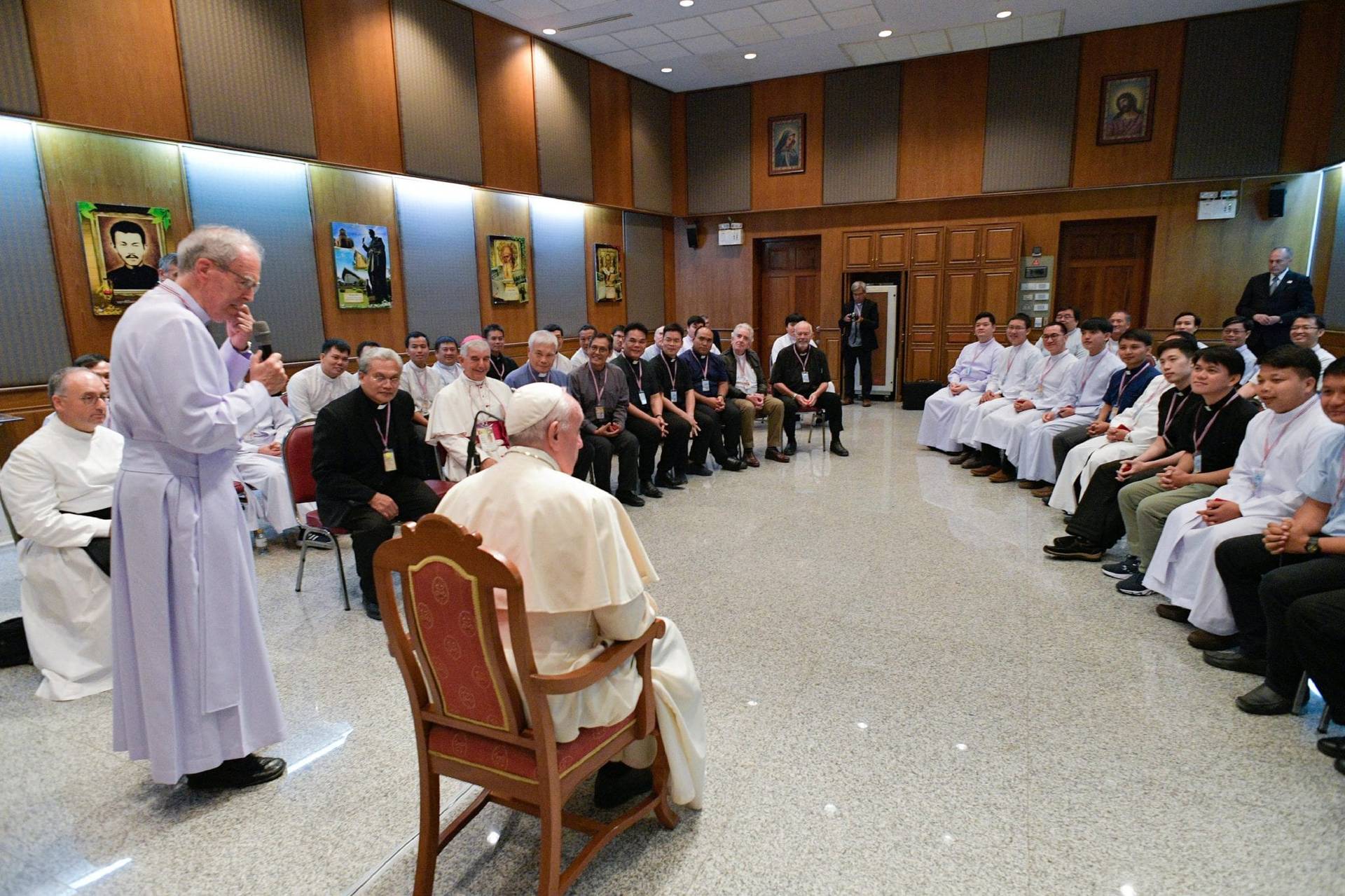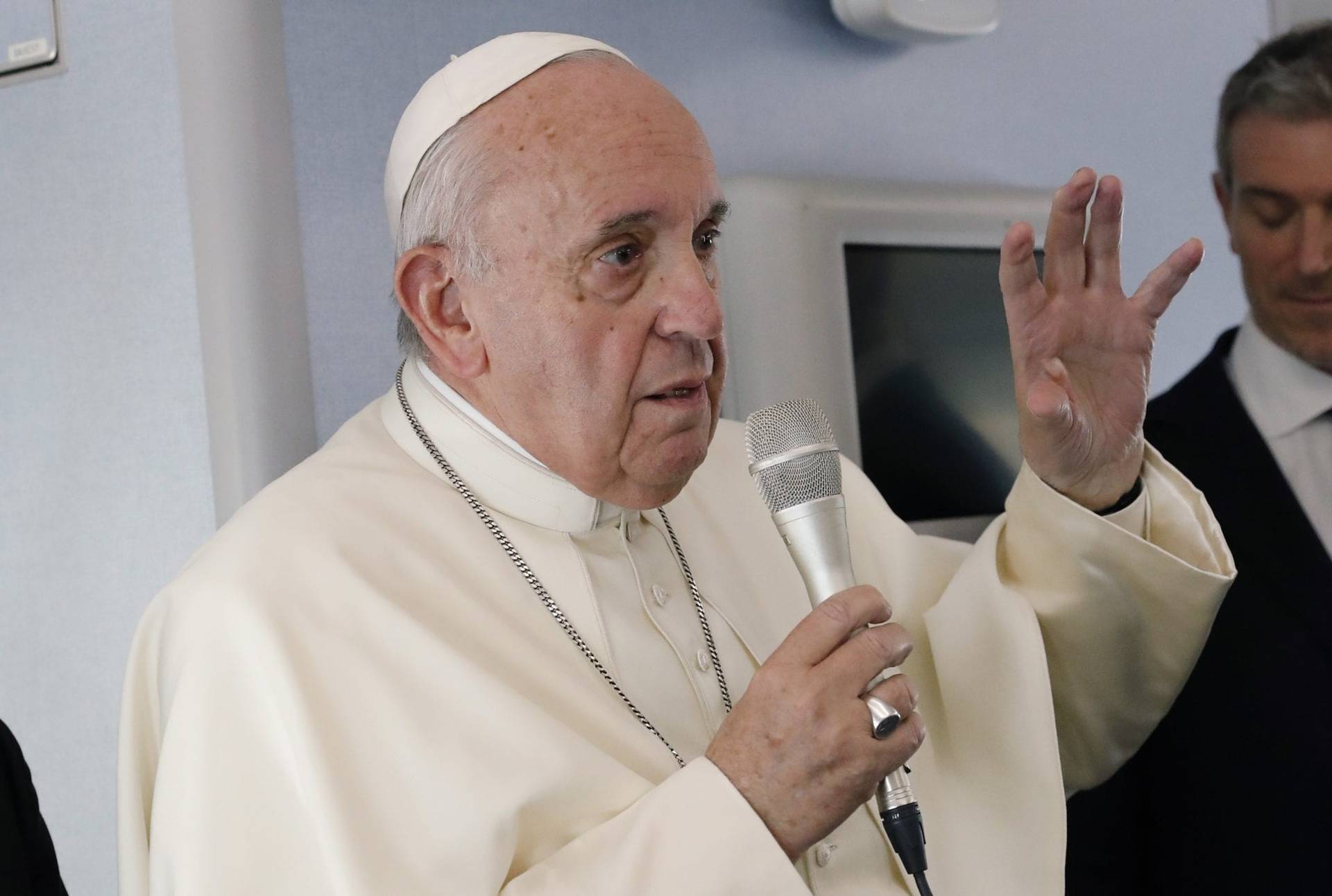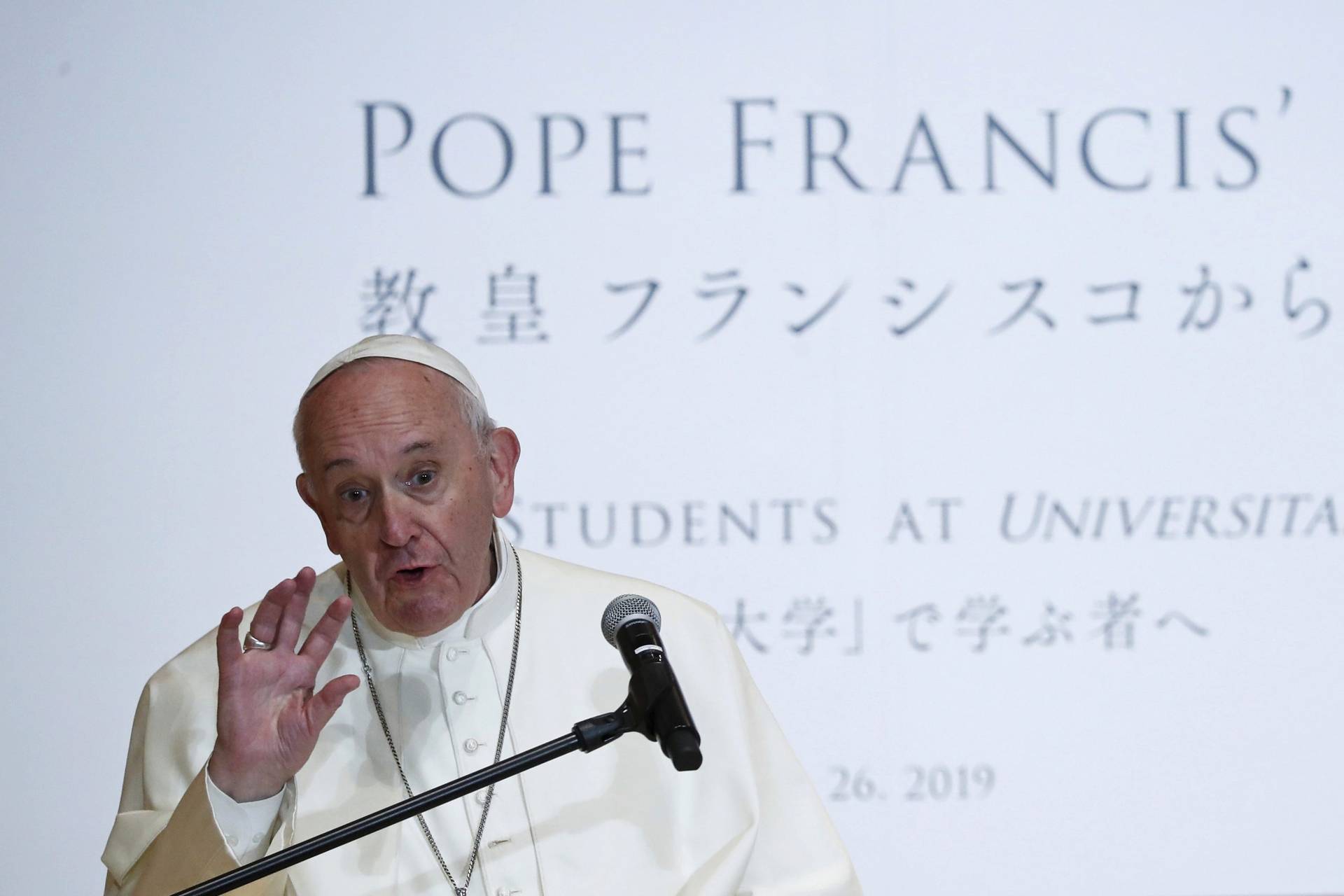BANGKOK – Tokyo, Hiroshima and Nagasaki. Three cities in three days is the schedule for Pope Francis’s Nov. 23-26 visit to Japan, a land to which he dreamed of being a missionary when he was a young seminarian studying to become a Jesuit priest in Buenos Aires, Argentina.
The visit will give Francis the opportunity to encourage the tiny Catholic community in the country: Counting little over half a million people, Catholics represent less than one percent of Japan’s population.
But he will also deliver a strong message calling for a ban on nuclear weapons in the only two cities in the world where they were used in war: Hiroshima and Nagasaki, bombed by the United States in 1945. Six days after the second bomb, “Fat Man,” was detonated in Nagasaki, Japan announced its surrender, bringing World War II to an end.
At least a hundred thousand Japanese civilians and military personnel died due to the heat, radiation and blast effects of the two bombs. Many tens of thousands died from radiation sickness or related diseases, bringing the estimated death toll to 400,000 people.
Francis is on record saying that he wants a total ban on nuclear weapons. Back in 2017 he said that countries shouldn’t stockpile them, even if for the sole purpose of deterrence. Japan has a somewhat unique status, as the only nation to have suffered the effect of nuclear weaponry. It advocates disarmament, while relying on the “nuclear umbrella” of the United States as a deterrent.
Nuclear weapons reflect a “mentality of fear,” Francis said in 2017, an effective and inclusive effort can lead to the dismantling of arsenals.
The world cannot but be “genuinely concerned” by the “catastrophic humanitarian and environmental effects,” of deploying nuclear devices, taking into account also the possibility of an accidental detonation. The threat of their use, as well as their existence, must be “firmly condemned,” he said.
On Monday, as the pope was packing his bag for the Nov. 20-26 trip to Thailand and Japan, the Vatican released a video addressed to the Japanese people in which he says that “using nuclear weapons is immoral.”
In the video, the pope said that the “strong instinct, which resonates in our hearts, to defend the value and dignity of every human person acquires particular importance in the face of the threats to peaceful coexistence that the world faces today, especially in armed conflicts.”
Bishop Paul Toshihiro Sakai, auxiliary of Osaka and director of communications for the pope’s trip told Crux that even though Japan is today not at war, “as the pope always says, there are still elders who were victims of the two atomic bombs that fell on Hiroshima and Nagasaki.”
Both cities have hospitals specifically set up to tend to the survivors, he said, and it’s a “suffering that is still lived, that is current.”
“That is why the pope shouts for peace to the whole world, accompanying the suffering of many,” the bishop said. “The pope accompanies those who suffer and gives us courage for the future, which in our case, is a call to continue being a country of peace.”
Francis will visit Hiroshima and Nagasaki on Sunday. He will deliver his “Message on Nuclear Weapons,” as the Vatican is calling it, from the Atomic Bomb Hypocenter Park in Nagasaki.
Speaking as a “simple faithful,” Toshihiro said he was “looking forward” to the papal visit, particularly seeing that it’s a “land far, far away from Rome” but also because he knows Japan has long been a missionary territory admired by Francis: “It’s a joy for us that he can fulfill the dream [of being a missionary here].”
Also in Nagasaki, the pope will honor the Japanese martyrs, encountering the descendants of those who persevered in their faith during centuries of anti-Catholic persecution. The Jesuits brought Christianity to Japan in 1549, but it was banned in 1614. Missionaries were expelled and the faithful forced to choose between martyrdom or hiding their faith. Those who survived are known as Japan’s “Hidden Christians.”
St. John Paul II, the first and until now only pope to visit Japan, also visited this monument to the Japanese martyrs, built in 1962 to honor St. Paul Miki and 25 companions. In red stone and bronze, it includes life-size carvings of the 26 killed in odium fidei, marking the beginning of two centuries of oppression.
Nagasaki, a port city, was the entrance for the missionaries, including as Toshihiro noted, St. Francis Xavier, the “co-founder” of the Jesuit order.
“Persecution can be anywhere,” Toshihiro said in a telephone interview Nov. 18. “As the pope says, today there is much persecution against the Catholic Church and other religions.”
However, in the case of Japan, there’s the “peculiarity” that after 250 years of persecution and clandestinity, the Catholic Church has “revived.” Most of those who today are Catholic in the land of the cherry blossoms are “descendants or have been influenced by those martyrs.”
Persecution, he said, is “not a good thing,” but there is a positive sense to it: “Martyrs do not choose death, but Christ, life.”
Due to the country’s history, Toshihiro said, most Catholics in Japan see Nagasaki as “our maternal home.”
Also on the agenda for Francis’s Nov. 23-26 visit to Japan is a meeting with the survivors of the “triple disaster,” meaning the earthquake, tsunami and the subsequent meltdowns at Fukushima’s nuclear plant in March 2011. This meeting will take place on Monday, before he meets with the Japanese Emperor Naruhito.
That same day, Francis will meet with the Japanese youth in Tokyo’s cathedral, where Toshihiro hopes the pope will have encouraging words.
“Young Japanese, as this is a very ‘advanced’ country, do not have much ‘need,’ as might be the case in some developing countries,” the bishop said. “But in Japan, we have a high suicide rate, especially among young people, as a result of this being such a competitive society, even for children. Young people have no certainty of future and hope.”
The bishop said he also hopes Francis will address the “internationality, the ‘Catholicity’ of the Church,” inviting people to be welcoming to the “many foreigners” who are in Japan as labor workers. During his encounter with the youth, the pontiff will hear the testimony of three young people: A Catholic, a Buddhist and a migrant.
Francis will head back to Rome on Tuesday, after visiting the Jesuit Sophia University. He is expected to take questions from the journalists traveling with him.
Follow Inés San Martín on Twitter: @inesanma
Crux is dedicated to smart, wired and independent reporting on the Vatican and worldwide Catholic Church. That kind of reporting doesn’t come cheap, and we need your support. You can help Crux by giving a small amount monthly, or with a onetime gift. Please remember, Crux is a for-profit organization, so contributions are not tax-deductible.















